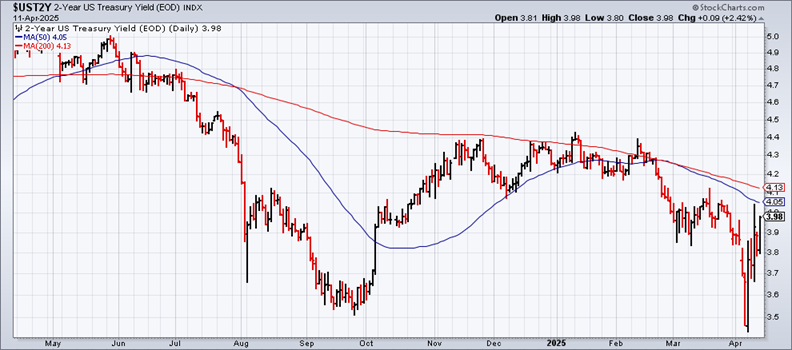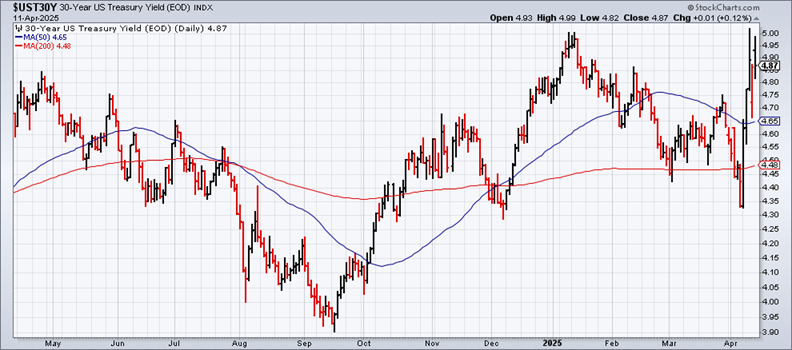Keysight partners with NVIDIA on quantum-AI computing architecture
One week of trading doesn’t change decades of precedent for the world’s primary “safe” asset, but reports that the global marketplace is rethinking risk for US government bonds is deeply unsettling for several reasons.
First and foremost, the US relies on the kindness of strangers to buy and hold Treasuries to finance the government’s long-running budget deficit. Meanwhile, investors in the US and around the world depend on Treasuries as a reliable safe-haven asset. Both of those conditions may be in the process of evolving, which has far-reaching implications domestically and internationally, starting with the US dollar, the world’s reserve currency.
The extraordinary state of affairs in the normally staid government bond market is highlighted in The Wall Street Journal’s editorial-page question over the weekend: “Is There a New US Risk Premium?”
The catalyst for the rethink: unusually high volatility in the 10-year Treasury yield, which surged to nearly 4.60% at one point in the week before ending at 4.49% on Friday — a rise of nearly 50 basis points, the biggest rise over such a short period in decades.
Raghuram Rajan, a former governor of the Reserve Bank of India and an ex-chief economist at the International Monetary Fund, was among the observers last week wondering if regime change has arrived. “There is a worry about how volatile and unpredictable US policy has become, as well as increasing fears that if the high level of tariffs are to stay, the US will head into a recession,” he said.
Jack McIntyre, a bond-fund manager at Brandywine Global, went further, arguing that “US assets are losing some of their safe-haven status.”
It may be premature to make definitive conclusions on how or if the role of Treasuries in the global eco-system are changing, but to monitor the evolving risk it’s obvious where to look: Treasury yields. The week ahead could be revealing and so three Treasury maturities deserve close attention.
Let’s start with the policy-sensitive 2-year yield. Despite the selloff in longer maturities, this rate is holding on to a downside trend that started a few months back. The implication: the market is still pricing in a Fed rate cut at some point in the near future. But that assumption may be tested, and perhaps abandoned, if the 2-year yield continues to rise. A sustained jump above 4% would be a warning sign. Note that Fed funds futures are currently pricing in a high probability (80%) that the Fed will leave its target rate unchanged at a 4.25%-to-4.50% range at the next FOMC meeting on May 7.
The 10-year Treasury yield, on the other hand, rose sharply last week to 4.49% and looks poised to challenge and possibly fully reverse the slide that prevailed through Apr. 4. Despite the extreme volatility, the 10-year yield is still trading within the range of the past year or so. The question is whether the 10-year rate takes out its previous high (roughly 4.80%), which could be a game-changer for expectations. Keep in mind that in “normal” circumstances, the 10-year yield would probably be trending lower amid expectations that the US economy is slowing and recession forecasts are bubbling.
If that playbook is thrown out, and yields continue to rise, the case for regime shift will strengthen by highlighting the uncomfortable scenario where hedging recession risk with Treasuries is substantially more speculative.
The rise of the 30-year Treasury yield is even more extreme and looks set to take out the previous high by crossing north of 5.0%.
The main risk is that foreign buyers of Treasuries – China in particular – are selling US bonds, which will lift yields. That’s no trivial issue when you consider that foreign investors hold more than $1 trillion of Treasury debt. Japan is still the biggest holder, followed by China, which has been reducing its holdings in recent years.
Matt Eagan, a portfolio manager at fund manager Loomis, Sayles & Co., sums up the current situation rather well, noting that “Picking fights with major trading partners who also finance your debt becomes especially risky with a wide fiscal deficit and no credible plan to rein it in.”
How risky? The answer will unfold in real time via the path ahead for Treasury yields.
